Alan Wheatley: coolest guy at Chatham House and Reuters; dawei, an even cooler guy.
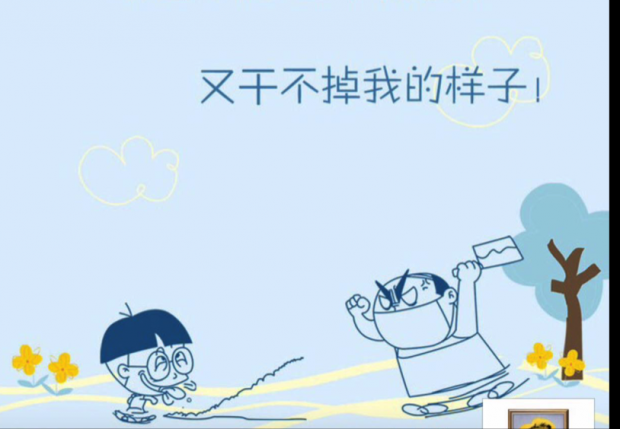
Global minus Chian equals?
Dawei:1. Without China’s stock market, yet, the past week has witnessed the global stock market turmoil, what is the reason? Would that be the beginning of the economic downturn
A: The background to the turmoil is that global markets, especially the US, had been rising since February 2009. A correction was overdue. What triggered it was the simultaneous shift in three crucial global economic variables: 1) The change to China’s FX regime in August, with the mini-devaluation, followed by the announcement of a shift to the CFETS basket in December. Investors feared that this was a smokescreen for an RMB devaluation, which in turn must show that the Chinese economy was in much worse shape than people thought. An RMB devaluation would export deflation to the rest of the world, which would also be troublesome because... 2) The collapse in oil prices, triggered by Saudi Arabia’s determination to crush expensive oil producers, was already spreading deflation round the world. 3) The third big shock was the Fed’s first interest rates rise since 2006. Although well signaled, the start of a US tightening cycle is alwayswatershed moment. Markets could have coped with one big dislocation but not three.
The Fed’s rate rise was only 25 basis points, but it spread fear about the capacity of emerging markets to cope with higher borrowing costs and a stronger dollar. The corporate debt of nonfinancial firms across major emerging markets rose sharply from about $4 trillion in 2004 to well over $18 trillion in 2014, according to the IMF. But now capital is flowing out - $735 billion in 2015, according to the Institute of International Finance - squeezing liquidity. Higher US rates also rang alarm bells for another market already under pressure – the high-yield US bond market, where many energy companies are struggling to service their debt. Higher US interest rates also make it less attractive for US companies to buy back their own shares – and this has been one of the driving forces behind the Wall Street bull market.
Adding to this list of reasons is the sudden realization by investors, following last month’s unexpected decision by the Bank of Japan to tax new excess reserves, that negative interest rates had become part of the problem not the solution because they were squeezing bank margins.
The fear in Europe is that undercapitalized banks will have to be rescued again by their governments, possibly reigniting the sovereign debt crisis and wiping out some bond and equity holders. These worries are exaggerated, I believe, but market panic risks undermining business and consumer confidence, thus sapping growth. As markets respond to the new reality they have created, a recession becomes a self-fulfilling prophesy – a process George Soros has called ‘reflexivity’.
Finally, and some people would say most importantly, US earnings have started to fall because the economy is late in the business cycle. Economic indicators from the US are mixed. Manufacturing is in a slowdown, possibly a recession, but the service sector is doing well and the job market is strong. Overall, a recession is still unlikely, in my opinion. Consumer spending should pick up because cheap oil is increasing real household disposable incomes. But the odds of a US recession have risen, and markets are no longer expecting further Fed rate rises this year or indeed in 2017. With the economy near stall speed, the danger of another big shock – say, a Chinese devaluation – could push it over the edge.
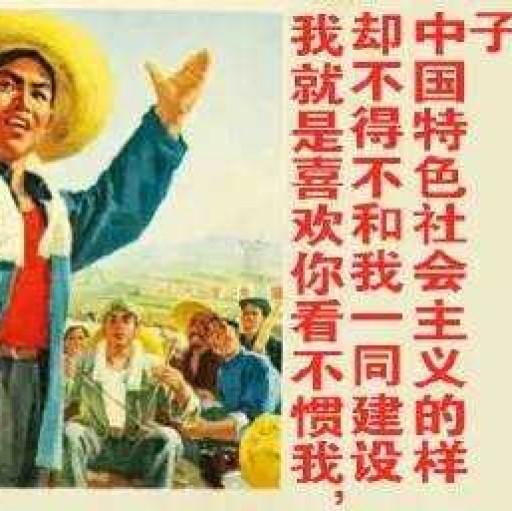
2. If China’s slowdown would make the rest of the world economy a hard landing this year? How important of China’s economy to the world?
A: When the Fed decided last September not to raise US interest rates because of uncertainty over China’s economy and stock market, it was the first time that a G7central bank had explicitly changed its mind on monetary policy because of China. The FOMC’s statement in February that it was watching global developments was also an implicit allusion to China. That is how significant China has become for the world economy. As a proportion of exports for developed markets such as the US and the euro area, China’s direct economic importance is relatively small. But the spillover effects of its slowdown on emerging markets, and on oil and commodity markets, has been huge. That’s why uncertainty about the health of its economy and the management of the RMB is so damaging. Further depreciation could export deflation and fan currency wars. Hence China is now the centre of global attention.
3. Some said China current economic growth is less about 3 -4 %, and what is your estimation?
A: I have no idea! But the simple fact that some Western economists think the growth rate is as low as 3-4% speaks volumes about the lack of confidence in official Chinese statistics:
■ How is it possible in a country as big and diverse and rapidly changing as China to arrive at an estimate of GDP within two weeks of the end of the quarter – much sooner than advanced economies can manage?
■ Just look at how big the revisions in US or UK GDP are from the first estimate to the final figure How is it possible that China’s revisions, when they finally come, are so small? How is it possible in such a dynamic, fast-changing economy like China’s that the path of GDP is so smooth?
■ The NBS does a poor job publicising past revisions to price and output levels, making it impossible to estimate real growth rates with confidence.
All in all, it’s difficult to escape the conclusion that the official growth figures are smoothed for political purposes. If that suspicion is wrong, the State Council could invite a commission of foreign statistics experts – say from the OECD, the UN and the IMF – to recommend how statistics gathering and analysis can be improved.
Having said that, the trend towards slower growth seems clear. In the ‘old Chinese economy’, annual energy and steel production are falling and FAI has slowed sharply. This is offset by growth in the ‘new Chinese economy’: retail sales are still rising briskly, with car sales at a record; express package deliveries are up by nearly 50% on the year; cinema tickets, online finance and tourism are booming. For the NBS, which typically has relied in collating data supplied by industrial SOEs, tracking the value added by the fragmented services sector cannot be easy. It’s not easy in any country. What value added do we attribute to the convenience of a free search on Baidu or Google?
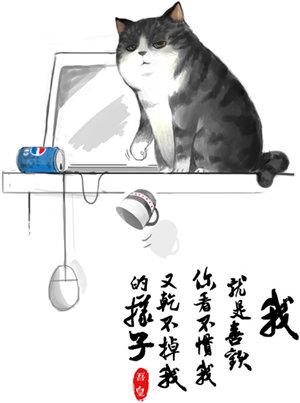
4. Mainland China’s close neighbor, HongKonghas experienced a exchanged market and stock market turbulence, what is the reason behind it?
A: Because HK is increasingly integrated into the PRC economy, both economically and financially it’s not surprising that China’s slowdown and question marks about policy are affecting HK. Local salaries are not rising as fast as before – and are even falling in some cases – while PRC tourists are spending less, perhaps as a result of the anti-corruption campaign. Furthermore, because HK operates a USD peg, the turn in the Fed’s interest rate cycle has unsettled the HK economy, pushing up local interest rates at a time when the property sector is already weakening. Housing transactions fell 12% last year, hitting a sector which, if ancillary businesses are included, accounts for one-fifth of HK’s GDP.
The PBoC has tried to dampen swings in the CNH FX rate, but as long as the dual market exists, arbitrage opportunities and regulatory intervention will generate volatility. Uncertainty over the RMB, coupled with dollar strength, has even revived speculation in some circles about the viability of the HKD peg. I think is speculation is misplaced as long as the RMB is not a truly convertible currency.
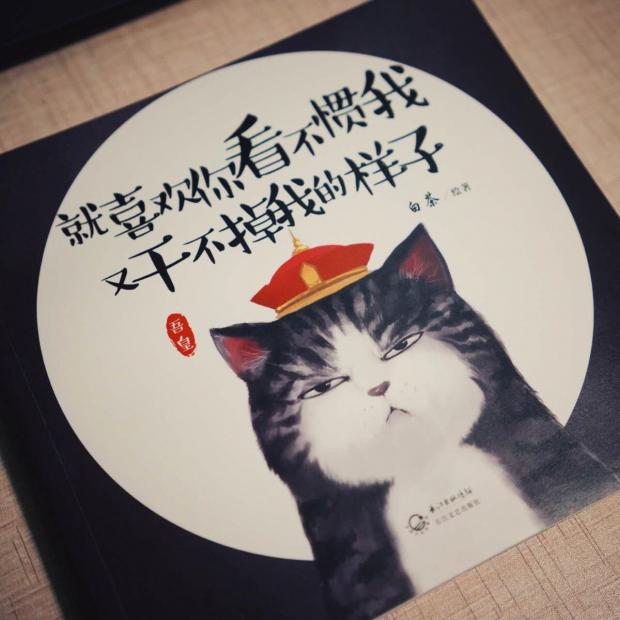
5. George Soros said China’s economy is headed for a hard landing, a slump that will worsen global deflationary pressures, drag down stocks and boost U.S. government bonds, what is your comments? Is George Soros or any other investors shorting the Chinese stock market a likely thing?
A: Investors have been speculating against China in one form or another for years, whether by shorting Chinese stocks in HK, multinational companies that depend heavily on China for sales or commodities and currencies that are exposed to China.
Objectively, it’s hard to disagree with the argument that China is contributing to global disinflation. Because of vast excess capacity in industry, producer prices are falling at an annual rate of nearly 6%, thus helping to reverse the sharp rise of the RMB’s REER in recent years. Reduced Chinese demand for oil and commodities is also contributing to the slump in prices of natural resources. But what’s happening in China needs to be put into the broader context of secular stagnation, the theory propounded in the late 1930s by US economist Alvin Hansen and revived by Larry Summers in 2013. Because of global imbalances, people want to save too much and invest too little, hence the downward pressure on interest rates and the astonishing demand for government bonds – with more than $7 trillion of debt globally now with negative yields. As a big savings economy China is a major contributor to global imbalances. But it is not alone: Japan, Germany, north-central economies such as the Netherlands and Norway are also big savers – as were oil-producing countries until recently. In such a situation, there is an urgent need for globally coordinated fiscal reflation. China can play its part there: both expanding its own deficit and using its chairmanship of the G20 to urge others to do the same.
6. It is commonly believed that fiscal stimulus, further interest-rate cuts, corporate-debt restructurings, significant devaluation of the currencywould stimulate China’s economy, what is your comment to this approach?
A: As mentioned in the last answer, I think China does need fiscal stimulus. The government deficit widened last year, and a further increase in 2016 would be appropriate. However, the emphasis should be on measures that promote economic rebalancing: the lion’s share should go not on infrastructure but on health and social security to boost consumption, plus tax breaks to spur R+D, innovation and technological upgrading.
If it were not for the current vulnerability of the RMB (see below) further interest rate cuts would be appropriate because the real cost of borrowing – certainly measured by PPI – is punishingly high. This matters most for smaller and non-state firms. It is less of an issue for politically connected SOEs that face no hard-budget constraint and can keep rolling over their loans – granted, of course, by state-owned banks – at any level of interest. This is why enterprise reform is so important. Keeping companies on life support by endlessly extending credit is raising China’s overall debt burden and tying up resources – capital, land, labour – that should be reallocated to more productive sectors. The question, of course, is whether far-reaching SOE reform is acceptable to Beijing. Will China be willing to countenance defaults or open up monopoly/oligopoly sectors to competition?So far the answer from the Party has been No. I will be watching closely to see whether Beijing’s attitudes change if economic growth visibly slows further, perhaps increasing unemployment. This is the single-most important issue facing China.
China does not need to devalue. Its share of global exports is still rising, suggesting competitiveness is not aproblem. But China does need greater FX flexibility so it can have more monetary policy autonomy. Moving to a basket peg is sensible and long overdue. Doing so now, however, is perilous because it risks accelerating capital outflows. China should have backed away from its quasi peg against the dollar, allowing the RMB to move more freely, when the economy was on a firmer footing. As a result, the PBoC is now in a quandary. It has more or less refrozen the RMB’s rate against the dollar in an effort to shore up confidence and halt capital outflows. But in doing so, it is allowing market expectations of an eventual devaluation to intensify. There may be no alternative but to gain some breathing room by reinstating capital controls, even though such a step would be seen as an embarrassment for a currency that has just been admitted to the SDR. A more vigorous communications policy is also essential. In this respect, PBoC Governor Zhou’s comments to Caixin, published on February 13, were long overdue. The positive reaction of global markets showed they were also very welcome.Why did he wait so long?
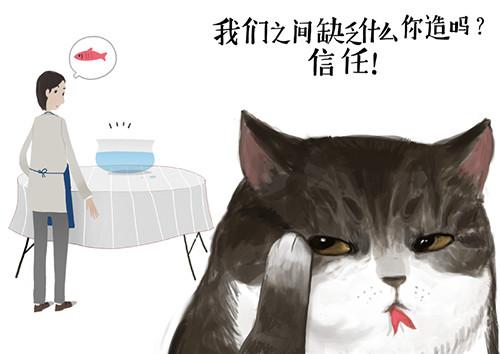
Middle figures to China’s policy makers
7. What is the best strategy option for China’s next step economic reformation, how to maintain the previous growth rate?
A: China’s policymakers are to be congratulated for recognizing that the old investment-driven growth model has exhausted itself. The tertiary sector is now bigger than the secondary sector in the national accounts. But that is partly due to relative price changes exaggerating the drop in the share of investment. It will take many years to switch to a new growth model. To smooth the transition, Beijing needs to increase productivity, focus on higher-value-added sectors and redouble efforts to promote consumption and services. I mentioned some of the policies that are required earlier. Above all, the financial sector needs to be opened to competition, and ailing SOEs must be allowed to default, so that bank loans are channeled to new, productive companies and the dangerous build-up of debt is halted. Hukou reform must be accelerated so that migrants are no longer treated as second-class citizens and can put down permanent roots with their families in cities. With access to welfare and health care, they would need to save less and could spend more. Their demand for urban public services, such as transport, would also rise. Fiscal reform is also critical so that local governments can raise more revenue to fund the services for which they are responsible without having to rely on land sales – with all the attendant problems of collusion with unsavoury developers, corruption and protests over land confiscation. In a country that is ageing rapidly and where people are living longer, Chinese should retire later – thus countering the drop in the labour force, And when people do retire they should enjoy a decent pension. Right now, too few do.
As mentioned above, these are highly sensitive politicalissues with potentially far-reaching consequences for the power of the Communist party and for social stability.They cannot be treated narrowly as economic questions.
It is encouraging that China is buying more overseas companies in order to acquire brands and expertise. Better protection of IP and more-equal treatment of foreign companies inside China would hasten the diffusion of technology and management techniques needed to keep raising productivity, tackling pollution, etc.
Having said all that, the law of big numbers means it is simply not possible to return to the previous growth rates. Remember, China still added more output last year than it did in 2011 when growth exceeded 11% because of the sheer increase in the size of the economy since then. And as mentioned above, the working-age population is shrinking rapidly. The biggest error Beijing could make is to be panicked at some point into another massive credit-fueled stimulus that achieves short-term gains at the long-term cost of an unsustainable increasenin debt. China needs smart growth, not growth at any cost.
8. it is said that unproductive investment and rising debt fuels China’s rapid growth, what is your comments? What should be the real driver of China’s economy?
A: The answer to question 7 addresses what should be the real drivers of Chinese growth. Certainly, the Incremental Capital Output Ratio (ICOR) has been falling sharply, i.e. China needs to invest ever more money to generate an extra unit of output. So I hope the days of largely investment-driven growth are over. From a peak of about 48% of GDP, investment needs to fall gradually to the lower end of a more sustainable range of between 35 and 40%. Cleaning up the mess from the unproductive investments of the past (especially the post-2008 stimulus) will be arduous. A metal worker in Dongbei cannot be converted into a software developer in Shenzhen. China can afford fiscal help for retraining and resettlement of unwanted workers. The central government also has a key role to play in absorbing the bad debts created by all of the wasteful investment. Non-performing loans are presumably many times bigger than the officially recognized figure of 1-2%. Banks must be made to write off unpayable loans or to transfer them to a new batch of bad banks (asset management companies), as happened in the early 2000s. In any event, the banks will need substantial recapitalization. The central government should also explicitly take non-viable local government loans onto its balance sheet and create a properly functioning municipal bond market. If it is well supervised and regulated, such a market would impose discipline on sub-national governments. As mentioned earlier, fiscal reform is essential in China.
The Power of Currencies and Currencies of Power
9. In a widely read article, you started with "It's our currency and your problem," U.S. Treasury Secretary John Connally famously said of the dollar in 1971.More than 40 years later, China is doing something about it.( Analysis: China's currency foray augurs geopolitical strains) CNY has experiencing a very turbulent year in the year 2015, SDR, internationalization, devaluation. What is your observation and what is the best strategic move for China’s currency policy makers?
A: China should put the strategic emphasis on strong economic fundamental and building trust. A strong currency is the product of a strong economy. China has had a strong economy for more than 35 years and needs to ensure that strength endures. A trusted currency depends on astute, transparent policy-making. This is why many overseas observers have been disappointed in recent months. Adopting a more market-orientated regime, as Beijing did in August, was sensible. The way the policy was executed and communicated was amateurish. After the first 1.9% devaluation spooked the markets, the PBoC followed up with another devaluation the next day, only to freeze the rate as panic spread. Why did Zhou Xiaochuan not give a news conference or a TV interview to communicate the new policy? Officials said they would learn from their mistakes, only to make a similar error when unveiling the CFETS basket in December. Yes, there was a helpful chart of how theNEER had moved since the end of 2014, but market participants feared that adopting a basket peg would be a disguised devaluation. No senior leader gave a convincing explanation of what was happening. And after the generalized market panic of early 2016, the PBoC essentially refixed the RMB against the dollar(until after LNY). No wonder that even the IMF has had to ask the PBoC to clarify its policy. This is extremely embarrassing, especially for a new SDR member, and should not have happened. It is not surprising in these circumstances that the market is wondering who is in charge of currency policy and whether a big one-off devaluation is indeed a possibility.
The heart of the matter, once again, is political control. Foreign observers conclude that the top leadership, secretive by nature, is the ultimate arbiter of FX policy and that the PBoC’s leeway to manage the currency is limited. This opacity and unpredictability at the very top of the policy-making apparatus will prevent investors and reserve managers from according the RMB the instinctive trust that underpins a major reserve currency. It took the US more than a century of building institutions, such as the rule of law and enforcement of property rights, to establish such trust and pave the way for the dollar to become the undisputed top global currency. It may not take China less time to establish the RMB’s reputation, but for the foreseeable future the RMB is likely to remain a junior reserve currency used mainly in Asia.
10. What is your observation and comments on AIIB, one belt on road strategy? Would a positivething for the global economy? Would China gain futher interest of them?
A: I welcome the AIIB and OBOR.
On OBOR, new infrastructure and communications links will deepen economic integration and promote growth. But there are qualifications to be made: China shouldn’t use the two strategies simply to find outlets for its excess production. China must help build institutional, administrative and industrial capacity in the countries it seeks to help rather than promote its own industries via tied aid and subsidies for Chinese companies. This would be to repeat the Western model of development and would stir resentment against China. After all, China has already come under fire in some circles for its ‘neo-colonialist’ investments in Africa.
The AIIB was a welcome wake-up call for Western countries that had been unwilling to change the post-war system of international economic governance set up at Bretton Woods. It is hard to imagine that the US Congress would belatedly have ratified the 2010 deal to give more voting shares to China and other big emerging markets if China had not taken the initiative to set up the AIIB. So it’s a good move. But the bank needs to strike a tricky balance. It must be less bureaucratic than the World Bank and the Asian Development Bank, but it must be accountable and transparent. And, importantly, it must not be perceived as an arm of the Chinese state. This will not be easy. Creating a small resident board of executive directors in Beijing sounds like a sensible first step. To establish its credibility, the AIIB must now do a good job selecting, preparing and implementing its first set of projects.
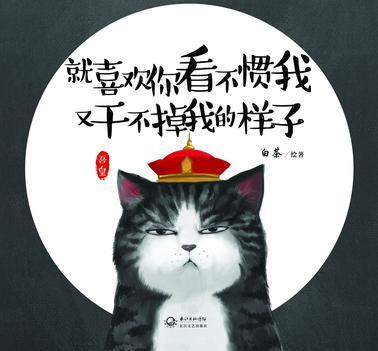
Off record ones(ci chu shanchu 2000 zi, mingan zi)
1. What is your observation to China’s .........
2. What is the difference between blar blar and bla bla..... buneng fa le ,hahaha.
0
推荐




 京公网安备 11010502034662号
京公网安备 11010502034662号 